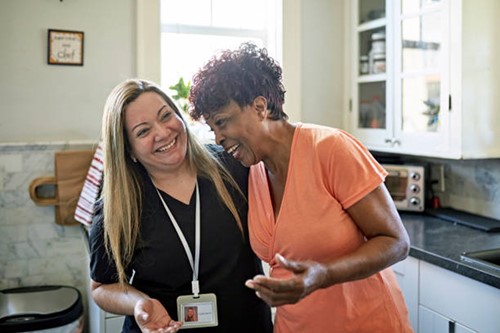Introduction

Introduction
This market position statement (MPS) explores the current position and future need for care and support at home in West Sussex.
There are many support solutions, groups, and services which support and enable people to live in their own home and that deliver the objectives set out within West Sussex County Council’s ‘Our Council Plan’ and the ‘Adult Social Care Strategy: The Life You Want to Lead’. This includes prevention services, support and information services and groups, befriending, outreach, and day activities. The services in focus in this document are around care and support at home (also known as domiciliary care or home care). These are services that help people stay independent by supporting them to manage aspects of daily living including their personal care and these services are typically provided by a private care and support at home provider, or a voluntary organisation who must be registered with the Care Quality Commission (CQC).
West Sussex County Council (WSCC) often arrange services directly on behalf of people who have social care needs and are eligible for local authority (LA) funding, although people with eligible care needs and who are eligible for LA funding can choose to receive their personal budget through a direct payment instead and arrange their own care. This may include purchasing care from a personal assistant (PA,) from a care provider or indeed a mixture of arrangements to meet their needs giving people choice in who provides services to them. People who fund their own care directly (referred in this report as self-funders) will also often engage a care agency or a PA to support them to continue to live at home.
Receiving care and support at home can help prevent, or delay, the need for other forms of care such as residential or nursing care. The level of help required can range from once-a-week or occasional support to help several times a day. Care and support at home services can also be provided during the night or on a live-in basis where a care worker lives in the property of the person they are providing care to. The pattern and type of service is designed around individual needs and preferences.
In this section
- Introduction
- Vision for Care and Support At Home
- 10 Key Intentions for Care and Support At Home
- West Sussex County Council Can Offer:
- The West Sussex Care and Support At Home Market and Commissioned Provision
- Prevention and Early Help
- Aims and Objectives of Care and Support At Home in West Sussex
- Current Supply of Care and Support At Home in West Sussex
- Care and Support At Home Workforce
- Spend And Cost of Care And Support At Home
- Current Needs of People Using Care and Support At Home
- Care and Support At Home Self-Funders
- WSCC Care and Support At Home Customers By Area
- Projected Future Demand for Adult Social Care and Support
- Working Age Adult Population Projections
- Projected Future Demand for Adult Social Care in West Sussex
- Summary and Strategy for Care and Support At Home – Up to 2035
- Concluding Remarks
